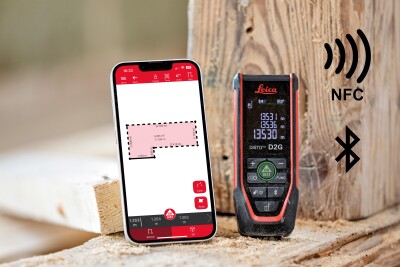Shabtay Negry, COO of Mantis Vision, delivered a provocative keynote to open SPAR Europe/ELMF 2014. In his 30 minutes, he gave us a look to a possible future for professional 3D scanning that depends on low-cost handheld scanners and still found time to make a case for a different idea of what constitutes “professional” scanning. What if, he argued, the next big turning point in the market will involve making 3D scanning devices available to professionals who didn’t even know they had a use for them?
Negry began his presentation by identifying the changes in the market since its beginning, when prices reached as high as 150k per scanner and the technology was usable by experts only. The first major turning point, he said, was the introduction of commercial scanners, which were much less expensive and significantly easier to use. At this point, naturally, people started buying a lot more scanners. “So, the cost of the unit is a major thing in this market,” he told the audience, “the second one is usability.”
Negry says the next turning point for the market, the next technology that decreased price and increased usability, was the the Kinect that was released in 2010. “At that point, it did nothing for the professional market, but it was the beginning of what is going to happen.”
The Kinect, for those of you who don’t know, is a body motion controller initially intended for use with computer interfaces–you could use one to control X-box games with your body. The reason this imprecise machine drew interest from professional users, Negry said, is “because the Kinect output data is a depth map, or a point cloud, which is the same output data that the 3D scanning devices are providing to the users.”
Because the Kinect could be had by nearly anyone — a unit is a couple hundred dollars, tops — the market began to consider 3D technology as an engine for developing other different kinds of products. You wouldn’t want to test 3D for robotic vision or automated drone flight using an expensive scanning rig, but a inexpensive Kinect would enable you to do just that.
So with the Kinect, Negry says, “the quality is limited, but the question is, is it good enough for the market? The answer is yes. Because many companies have already succeeded in putting the sensor into their product and bringing it to the market today.”
Companies like Matterport and DotProduct have already used similar kinds of sensors successfully in their products.
But how can they do that if the quality of the scan is not very high? “Because they compensate with good software,” Negry says. “It’s limited, they can’t do magic–you’ve see what the raw data looks like. But still, they could take a very low-cost sensor, put very innovative software in it, and come out into the market with very successful devices.”
This combination of inexpensive hardware and smarter software affected the market by showing that “a new type of user exists in the professional market that is not aware of the potential, of their abilities when using 3D systems.”
Now that low-cost devices of an adequate quality level exist, in other words, a new type of professional can start making use of them. This includes prosumer users, who Negry says are “not part of the professional 3D scanning market yet… but we believe they are going to be, and they are going to make the change in the [market]forecast.”
He presented a number of cases where an affordable, handheld 3D-scanning product could create a new kind of professional use, or even user. Imagine that you’re a construction building inspector. “What about having a device,” he asked, “that every team on the site can use with a database–you can scan something, maybe at the end of the day, maybe every day several times–you can upload it into a report and by that you do the comparison between the plan and what was actually achieved by the end of the day, creating a report, and having instructions for the next day’s manager.”
For that, Negry argued, you would need a very low cost device. Having such a thing would dramatically increase the number of users on site who perform scanning while the building is in progress.
Say you’re a plumber, for instance, and you need to find out the part number of the piece you’re looking at. Scan it with your tablet, use the tablet to search the internet automatically for the part, and let it give you directions to the nearest store where you can buy it. This is a professional use for 3D that does not depend on millimeter accuracy.
He mentioned that it could be useful for industrial designers, upholsterers, electricians, hobbyists, architects, carpenters, and more. Even in the verticals where laser scanning is already used, Negry said, “we believe you can find a new audience that need to use this type of technology. And we believe that this audience is massive compared to the number of users that are already using 3D scanning today.”
Stay tuned for more from SPAR EU/ELMF.






